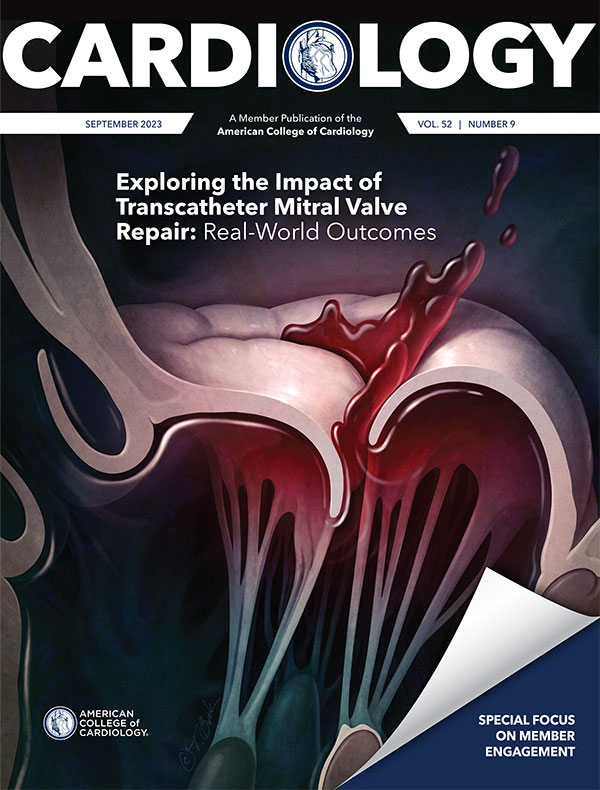Business of Medicine | Lessons From Medical Malpractice Claims

A previously healthy man in his early 60s went to the Emergency Department (ED) with complaints of chest pain, shortness of breath and diaphoresis. He had two similar episodes in the previous two weeks. An EKG showed ST elevations and his initial troponin was 0.76. An interventional cardiologist was called and immediately the patient was taken to the cardiac cath lab, with a door-to-balloon (D2B) time of 45 minutes. A subtotally occluded, heavily thrombotic proximal right coronary artery was noted and a stent placed. The other vessels had mild, nonobstructive diffuse plaquing; no other focal obstructive disease was seen on angiography. The patient's ejection fraction (EF) was 40%-45%.
At 1 a.m., a repeat troponin was 5.76. The nurse called the interventional cardiologist who expected the troponin result to be high, and he took no action because the patient had no chest pain. Throughout the night the patient had no complaints, oxygen saturations were 96%, heart rate in the 70s, BP 142/78 mm Hg. At 7 a.m., his troponin was 5.2, no arrhythmias were seen on five-lead cardiac monitoring and he was ambulating without difficulty. The patient's wife wanted her husband discharged as soon as possible because of insurance issues.
The interventional cardiologist contacted social services for assistance with prescriptions and getting a primary care physician. He agreed to discharge the patient and said he discussed the risks of early discharge with the patient's wife but did not document this in the chart and the patient's wife denied any such conversation. No "against medical advice" paperwork was found in the chart. The patient was discharged home at 7 p.m. and he went to bed at 10:30 p.m.
He was found at 1 a.m. on the bathroom floor not breathing, his wife called EMS and CPR was started. On arrival at the ED, there was no pulse or BP. An autopsy showed acute myocardial infarctions and multifocal severe coronary atherosclerosis.
Expert reviews were mixed regarding standard of care after a STEMI and catheterization. No repeat EKG was done before discharge. A nurse expert questioned the capacity of a nurse to go up the chain of command if there was disagreement about an early discharge. Other experts felt the patient was at low risk for complications and discharge at approximately 24 hours post procedure was okay. One expert felt the patient likely had an arrhythmia/arrest possibly STEMI-related and the outcome would have been the same if he had stayed in hospital. The case settled for $250,000.

"Three P" Analysis
The "Three P's" refer to the three key elements to reduce practitioner risk related to malpractice litigation.1

Prevent Adverse Events
Earlier hospital discharge in low-risk patients who present with STEMI has been an area of focus and is now well-accepted practice. The randomized PAMI-2 trial of early discharge in STEMI patients treated with primary PCI looked at the ability to use acute angiographic and clinical data to identify low-risk patients.2 This along with four more randomized trials of early discharge and a meta-analysis of 1,575 patients have confirmed early discharge of low-risk individuals at 48-72 hours was safe.3
The European Society of Cardiology guideline for management of acute MI recommends that low-risk patients who underwent uncomplicated primary PCI can be safely discharged home in 48-72 hours (Class IIa).4 Although U.S. guidelines do not comment on length of stay (LOS), early discharge after primary PCI is widely embraced, even among selected older patients, especially in the advent of radial access for PCI.5
Rathod, et al, reported an observational series of STEMI patients treated with primary PCI at a single high-volume center.6 They compared two groups at low risk for major adverse cardiac events (MACE) who met early discharge criteria: one discharged <48 hours with close follow-up and the other discharged >48 hours at the physician's discretion.
The criteria to determine low risk were: 1) EF >40%; 2) successful PCI with grade 3 flow; 3) absence of multivessel (MV) disease requiring inpatient revascularization; 4) Killip class 1; 5) no recurrent ischemia or arrhythmias; and 6) appropriate social situation for early discharge. In the present case, the patient met low-risk criteria.
In Rathod's study, median LOS was 24.6 hours, there was no cardiovascular deaths and MACE in only 1.2%. This result was attributed to a coordinated team approach with high volume operators, radial access in 94% and a standardized protocol for thrombosis prevention. Early discharge was limited to patients with minimal myocardial damage from STEMI, i.e., median D2B time of 50 minutes. Patients discharged >48 hours had an anterior MI, MV disease and MV PCI.
Although Rathod, et al., demonstrated safe discharge of very low-risk patients, there may be additional clinical factors to consider, including advanced age, severe renal insufficiency, bleeding complications, cardiac arrest and anemia.

Preclude a Malpractice Case Despite an Adverse Event
The outcome was tragic and even the best communication may not preclude a lawsuit. However, especially when a patient and/or family member elects to pursue a course different from the clinician's recommendation, it's imperative the clinician discuss this with them in detail, including potential consequences of their decision to refuse/delay/ignore treatment recommendations.

Prevail in Lawsuits When a Claim is Made
Documentation of patient-clinician communication is critical, especially when a patient elects to ignore a clinician's instructions. In this case, leaving the hospital against the cardiologist's advice should have been clearly documented and enforced by the patient signing an "against medical advice" form. If the physician agreed with early discharge, the reasons plus specific follow-up plans should have been documented.
The guidelines suggested here are not rules, do not constitute legal advice, and do not ensure a successful outcome. The ultimate decision regarding the appropriateness of any treatment must be made by each health care provider considering the circumstances of the individual situation and in accordance with the laws of the jurisdiction in which the care is rendered. This article was authored by Dipti Itchhaporia, MD, MACC, an interventional cardiologist and a past president of the ACC, and a member of the ACC Medical Professional Liability Insurance Workgroup, and David L. Feldman, MD, MBA, FACS, a plastic surgeon and the chief medical officer for The Doctor's Company and TDC Group in Napa, CA.
References
- Feldman DL. Prevent, Communicate, Document: Medical Malpractice Data Help Us Manage Risk. The Doctor's Advocate. Available here.
- Grines CL, Marsalese DL, Brodie B, et al. Safety and cost-effectiveness of early discharge after primary angioplasty in low risk patients with acute myocardial infarction. J Am Coll Cardiol 1998;31:967-72.
- Gong W, Li A, Ai H, et al. Safety of early discharge after primary angioplasty in low-risk patients with ST-elevation myocardial infarction: A meta-analysis of randomized controlled trials. Eur J Prev Cardiol 2018;25:807-15.
- Ibanez B, James S, Agewall S, et al. 2017 ESC guidelines for the management of acute myocardial infarction in patients presenting with ST-segment elevation. Eur Heart J 2018;39:119-77.
- Swaminathan RV, Rao SV, McCoy LA, et al. Hospital length of stay and clinical outcomes in older STEMI patients after primary PCI: A report from the National Cardiovascular Data Registry. J Am Coll Cardiol 2015;65:1161-71.
- Rathod KS, Comer K, Casey-Gillman O, et al. Early hospital discharge following PCI for patients with STEMI. J Am Coll Cardiol 2021;78:2550-60.
Keywords: ACC Publications, Cardiology Magazine, Patient Discharge, Malpractice, Medical Errors, Risk Management
< Back to Listings

